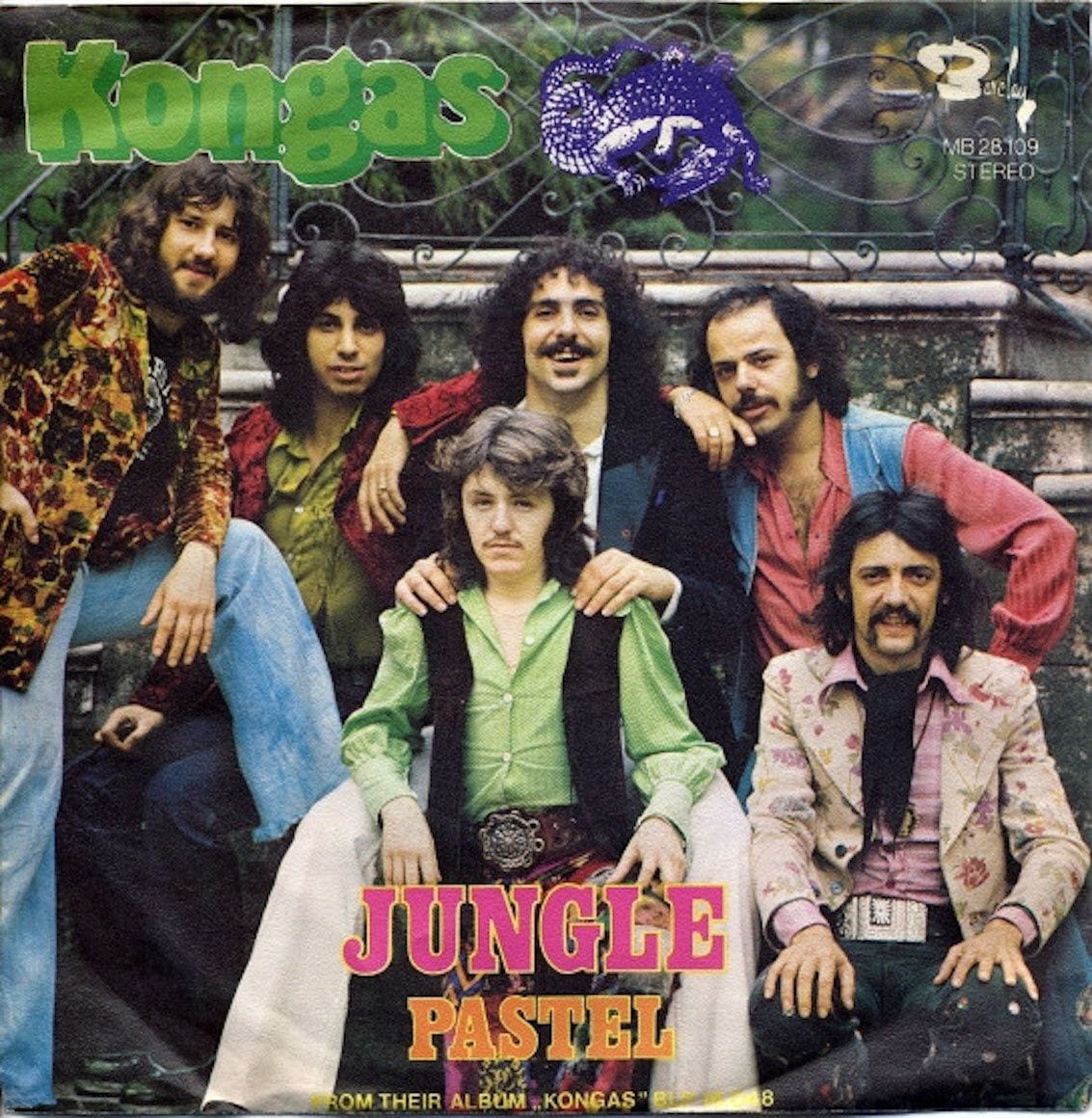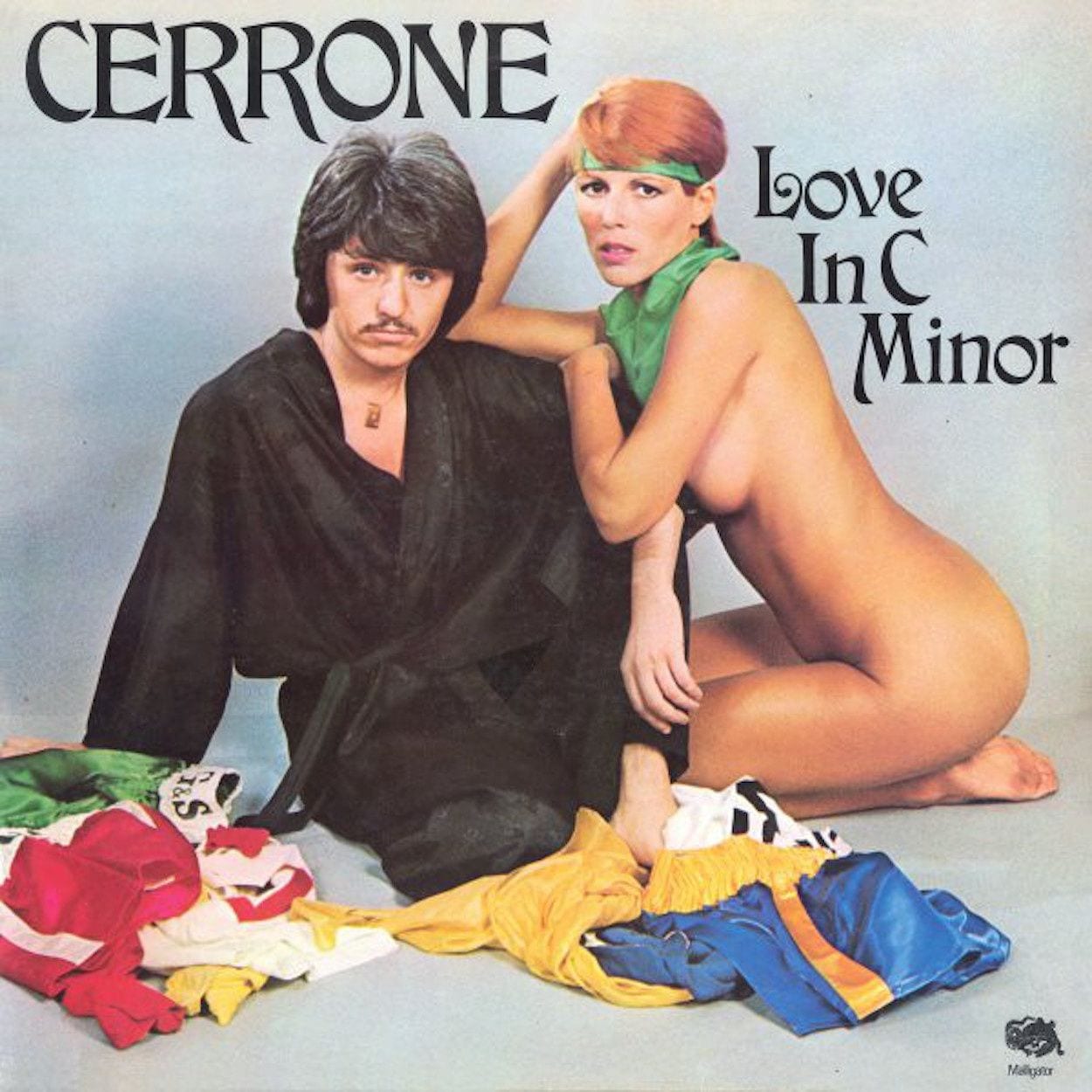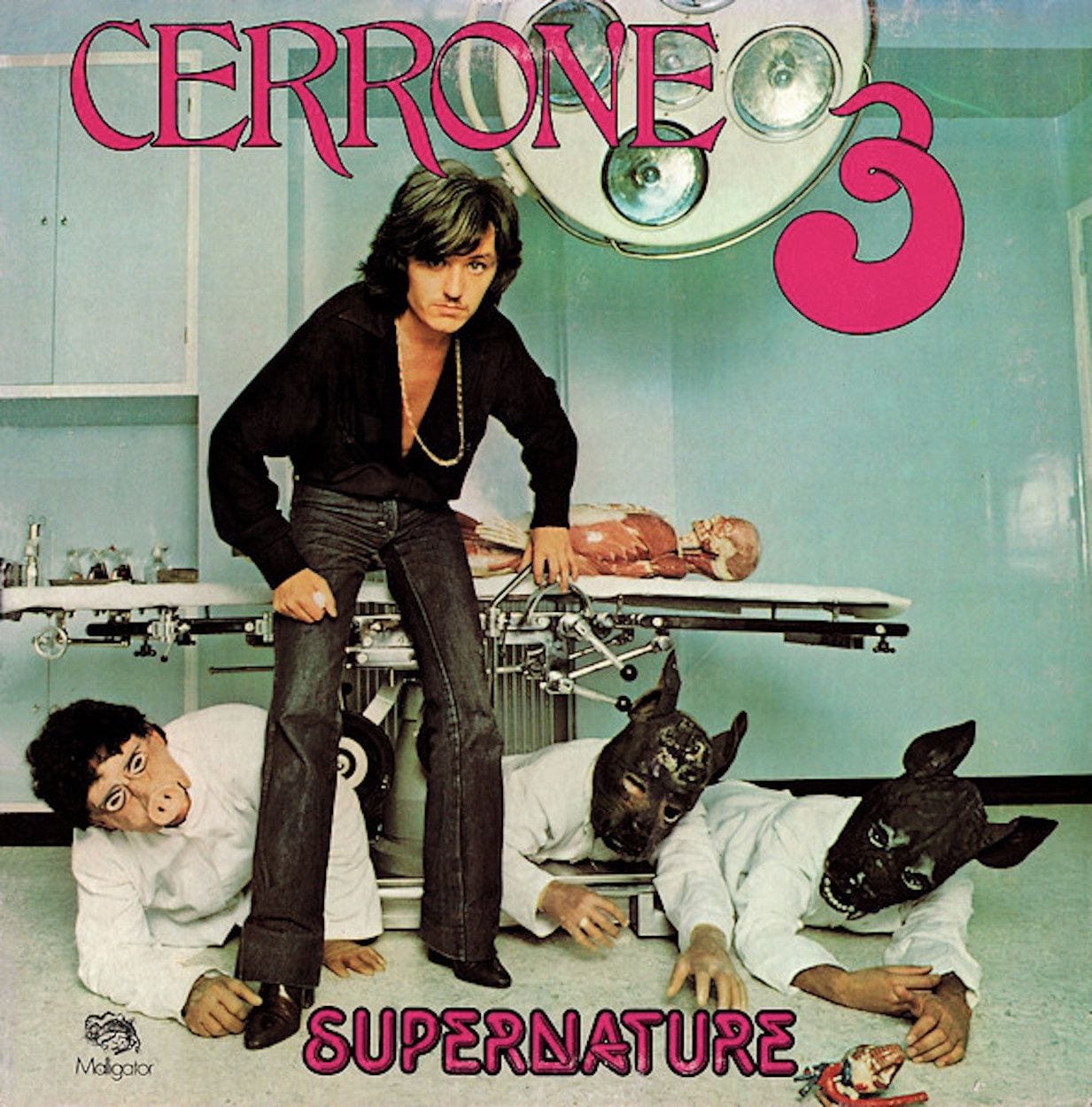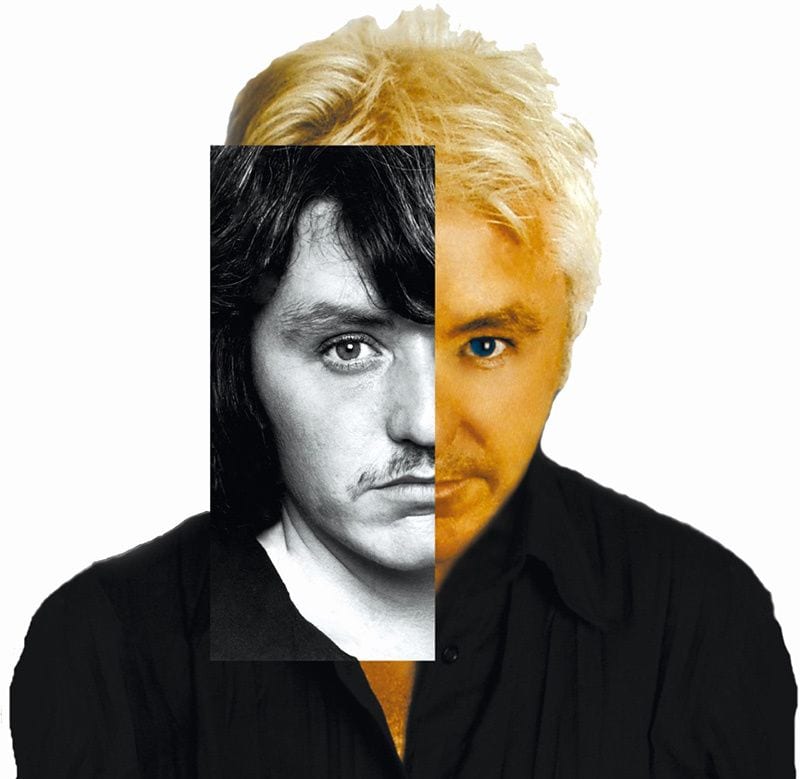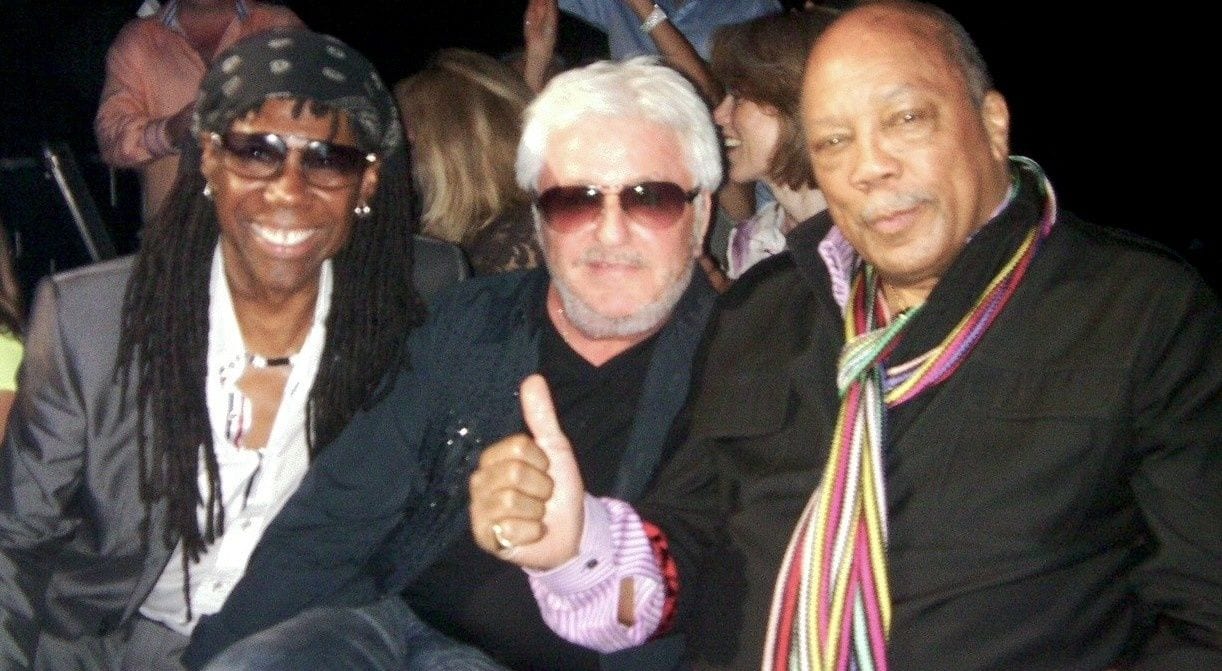

“Cerrone always satisfies.” Billboard printed those words in 1979. Four decades later, they unequivocally define the oeuvre of legendary drummer, producer, composer, DJ, and visual artist Marc Cerrone. No matter the era, a Cerrone track fulfills the promise of satisfaction. While Paris and London-based Because Music prepares the vinyl release of Cerrone’s latest EP Afro II (2018), and the recently published French edition of Cerrone — Paradise; An Autobiography (2018), co-written with author Bee Gordon, explores the artist’s fascinating life and career, Cerrone speaks with PopMatters about some of the classic recordings that propelled him to the forefront of disco and beyond.
In the early ’70s, many listeners first became acquainted with Cerrone’s multi-faceted talent through Kongas, a six-piece outfit that crystallized during his stints in different bands who performed around Paris and throughout the south of France. “I played with a lot of other groups,” he says. “I chose the bass player, guitar player, and keyboard player. I found two great percussionists from another band. I asked the two percussionists to leave the other band and come with me. I deemed the group ‘Kongas’. The name corresponded to the music we did. The sound of the group was Afro-rock.”
Record company entrepreneur and producer Eddie Barclay signed Kongas to his Paris-based Barclay label, home to major acts like Jacques Brel, Charles Aznavour, and Mireille Mathieu. The group’s self-titled Kongas (1974) album compiled their very first singles, including “Jungle” (1972) and “Anikana-O” (1973), which Buddah Records subsidiary Kama Sutra had released in the U.S. a year earlier. The album also featured Cerrone’s first songwriting effort, “Pastel”.
Barclay chose a reptilian mascot for the Kongas album cover as well as the “Jungle” single sleeve. “The crocodile had been proposed by the record label,” says Cerrone. Following his departure from Kongas, Cerrone found another use for the logo. “As I was the founder of Kongas, I kept the symbol that had brought me luck,” he continues. “When I left the group to make a solo career and my EEC label, I played with the word alligator, using the first letter of my first name — Malligator.”
Before Malligator’s launch, Cerrone retreated from recording. He invested the money he’d made from Kongas to open a record shop that specialized in imports. By the autumn of 1976, he was ready to return to the studio as a fully fledged artist-drummer-songwriter-producer. To help shape his first solo statement, he enlisted someone who’d been an integral force in Kongas, Alec R. Costandinos. “Alec was one of the Kongas authors,” he says. “I offered him to stay on my side.” Using the alias “Robert Rupen”, Costandinos had actually co-written “Anikana-O” and a few other tracks on the Jungle album. This time, a mysterious pseudonym wouldn’t mask his work with Cerrone.
Recorded at Trident Studios in London, Love in C Minor (1976) furnished a soundtrack for discotheques and the boudoir alike. “For my first solo album, I did not want to make any concessions to the music business,” he says. “So I did exactly as I wanted: create music for clubs that can be played, or not, on the radio.”
The fact that “Love In C Minor” filled one whole side was hardly the point. It’s what Cerrone delivered on those 33 1/3 grooves that mattered. Leaving little to the imagination, Cerrone and his female companions explored pleasure through a suite of aural vignettes. Juxtaposing soft coos (“love me”) with a throbbing beat and bursts of percussion, “Love in C Minor” was unlike anything in the clubs, even its most obvious forebear, “Love to Love You Baby” by Donna Summer.
Cerrone kindled Side Two of Love in C Minor with a cover of Los Bravos’ “Black is Black” and “Midnite Lady”, another original composition that featured some seductive moaning from the drummer himself. “Everything was done in good humor,” he says, coyly. However, the artist struggled to find a company that would distribute his solo debut. “No record labels in France wanted to sign me to a contract,” he explains. “I pressed my vinyl records myself. I sold to wholesalers in France and to some music stores in Paris.”
Across the continent, New York DJ’s broke “Love in C Minor” in the clubs, completely unbeknownst to Cerrone. An employee at Champs Disques in Paris had mistakenly sent a box of Love in C Minor records back to the shop’s wholesaler in New York. Intrigued by the album’s provocative cover photo, a DJ who worked for the wholesaler began spinning the title track at a local disco. Other DJ’s quickly followed suit and, to Cerrone’s complete surprise, famed WBLS-FM luminary Frankie Crocker recorded his own version of “Love in C Minor” for LA-based Casablanca Records.
While attending the music industry’s MIDEM conference in Cannes, Cerrone discovered that both his original version and Crocker’s cover of “Love in C Minor” had become club hits. WEA France executive Bernard de Bosson advised him to take his masters of Love in C Minor to WEA-distributed Atlantic Records in New York. Cerrone recalls, “I made an appointment and met Atlantic’s Ahmet Ertegun, who offered me a contract immediately.”
Issued on Atlantic’s Cotillion subsidiary, Cerrone’s debut far outstripped the impact of Kongas upon its release during the first weeks of 1977. Billboard characterized the title cut as “a 15-minute disco opus with strings and female vocal harmonies behind a relentless beat that should wear out all but the most durable disco dancers” (26 February 1977). Even Crocker’s competing version of “Love in C Minor” couldn’t stall the original version’s ascent on the pop charts. Both singles debuted on the Hot 100 the week ending 26 February 1977, but it’s Cerrone’s production that made the Top 40, ultimately peaking ten places higher than Crocker’s recording. The single also made the Top 40 on the R&B singles chart and became Cerrone’s first Top 40 hit in the UK.
Though Costandinos and Cerrone had parted ways well before “Love in C Minor” became a worldwide hit, Cerrone joined forces with a new creative partner for his follow-up. “I met Alain Wisniak, and the chemistry between us was immediate,” he says. Cerrone and Wisniak penned three compositions for Cerrone’s Paradise (1977), including the 17-minute title track. Released in summer 1977, “Cerrone’s Paradise” fired up the Top Ten of the disco chart while DJ’s also put “Take Me” and “Time for Love” into heavy rotation.
Cerrone’s first two albums were mere teasers for the triumphs that lay ahead. For his third release, Cerrone deliberately changed course. “I really wanted to stay original. As my first two albums had been hits, many productions had a sound close to mine. So I did Supernature, which corresponded to nothing comparable on the market.”
Cerrone 3: Supernature (1977) largely departed from the orchestral sound of Cerrone’s first two efforts. Led by sought-after session vocalist Kay Garner, with lyrics penned by Lene Lovich, “Supernature” was a chilling cautionary tale about humankind’s abuse of the environment. The production was no less gripping. “My pleasure and my pride were to put the drums up front in the mix,” says Cerrone, whose beat summoned the fearsome march of monster-like creatures.
Cerrone created a gatefold album cover that underscored the sinister sci-fi motif of the title track. He explains, “I am an artist of the ’70s, a period where we made covers that emphasized the music themes. This is the reason for my choice to put naked women on the cover of Love in C Minor. Same for Supernature: I wanted to translate the text into an image.” The artwork of Supernature, which depicted Cerrone crouching over monsters in the middle of an operating room, remains the artist’s personal favorite among his album covers.
In November 1977, Atlantic Records threw an exclusive Supernature release party at Studio 54 in New York. “We had a lot of fun,” Cerrone exclaims. “Great people, a feeling of total freedom!” DJs and dancers alike reveled in the entire set, especially the propulsive “Give Me Love”, and kept the album at #1 on the disco chart for four weeks throughout January and February 1978. A single edit of “Supernature” rocketed to the UK Top Ten and crossed over to the R&B singles chart and the Hot 100, where it resided for five weeks in early 1978.
Cerrone’s presence in the clubs swelled when he established Crocos Records, a subsidiary of Malligator Productions. Kongas reunited for the label’s first release, Africanism (1977). Produced by Cerrone, the album featured a side-long melding of “Africanism” and a cover of the Spencer Davis Group’s “Gimmie Some Lovin'”. He teamed with longtime studio partner Don Ray (aka Raymond Donnez) on both the percussion-driven title track and “Dr. Doo-Dah”. Completed in late-1977, Africanism even found fans among rock critics. “This Cerrone-Don Ray concept group is the most convincing rock-disco fusion to date,” declared Village Voice scribe Robert Christgau.
If Africanism won Cerrone respect from the rock press, then his second Crocos production further endeared him to his core club audience. He conceived a whole new appellation — Révélacion — and released The House of the Rising Sun (1977), continuing his line of reimagined ’60s pop covers that had begun with “Black Is Black” and “Gimmie Some Lovin'”. Whether intentional or not, Casablanca Records issued a version of “The House of the Rising Sun” by Santa Esmeralda within weeks of the Révélacion version, but there was no mistaking which track had the Cerrone-Don Ray signature. In fact, Cerrone’s productions dominated the disco chart the week ending 18 February 1978, with “The House of the Rising Sun” debuting at #38 and Supernature and Kongas’ “Africanism” / “Gimmie Some Lovin'” holding fast in the Top Ten.
When Billboard held its “Disco IV Forum” at New York’s Hilton Hotel in June 1978, Cerrone prevailed as the most decorated artist of the conference. He was fêted with five awards: “Male Disco Artist of the Year”, “Disco Music Arranger of the Year”, “Disco Instrumentalist (Musician) of the Year”, “Disco Composer of the Year” for Cerrone 3: Supernature, and “Best Producer of a Disco Record” for Cerrone’s Paradise, Supernature, and Africanism. Cerrone was duly honored for maintaining a quality of excellence throughout his projects, but some of his greatest work was yet to come.
One album in particular pulsated under the hot summer sun at Fire Island tea dances during August 1978: Don Ray’s The Garden of Love (1978). “Don Ray has a huge talent,” says Cerrone of his frequent collaborator. “In ’78, I asked him to produce an album in his own universe. We had a lot of fun.” With essential cuts like “Got to Have Loving” and “Standing in the Rain”, the album was the perfect merging of Cerrone and Don Ray’s songwriting, arranging, and production talents.
Though The Garden of Love was credited to Don Ray, it was the voice of L. Rich that echoed through discotheques. Cerrone had become acquainted with the singer during a tour in Germany and had also hired him for “Gimmie Some Lovin'” and “The House of the Rising Sun”. Rich’s raw vocals gave “Got to Have Loving” a sense of urgency and infused “Standing in the Rain” with gritty, emotional intensity. Don Ray would follow up with “Simplify”, a non-album single released on Malligator in 1979, but The Garden of Love is still regarded as the arranger’s crowning achievement. “It remains, for me, a true classic disco album,” Cerrone proudly states.
While The Garden of Love landed in the Top Five of the disco chart, portions of the first Kongas album were re-released by Salsoul Records under the title Anikana-O (1978). Tom Moulton remixed key tracks from the album, extending the title cut to a marathon ten minutes. Arriving at the peak of the disco phenomenon in the U.S., Anikana-O found a new audience beyond the relatively smaller group of disco devotees who’d discovered Kongas earlier in the decade.
Atlantic released Cerrone IV: The Golden Touch (1978) in autumn 1978 just as Moulton’s remixed tracks from Kongas surfaced in the clubs. The album heralded a clear progression in Cerrone’s music. With its infectious “chante-moi” chant, “Je Suis Music” served as the album’s opening statement. The song had even been selected as the album title until Atlantic executives suggested “The Golden Touch” instead.
Kay Garner was indispensable to the album’s appeal. Having recorded with everyone from Elton John to Serge Gainsbourg, she complemented the edgy rock of “Rocket in the Pocket” and embellished the resplendent melodies of “Music of Life” and “Look for Love” in equal measure. “This is one of my favorite songs of my catalog,” Cerrone notes about the latter tune. “We recorded ‘Look for Love’ completely live, with Don Ray as a chief conductor. I think this recording has a certain kind of magic.”
Clubs adopted “Je Suis Music” and “Look for Love”, sending the songs into the Top Ten of the disco chart in late 1978 and early 1979. Released as a 7″ single in the UK, “Je Suis Music” reached the UK Top 40 and rewarded Cerrone with his third biggest UK hit.
Until 1979, Cerrone recorded and mixed his albums exclusively in Europe. Cerrone V — Angelina (1979) marked his first time recording in the U.S. The album title hinted at the session’s headquarters in the City of Angels. Divided between Cherokee Studios and West Lake Audio in Hollywood, the album employed some of the city’s most sidemen, including Toto members Steve Lukather and David Hungate. “I met the group Toto one night in a club in L.A.,” Cerrone recalls. “I asked them to come see me record. We ended up playing together.”
Opening track “Rock Me” was an irresistible fusion of rock and disco. Certainly, “Rocket in the Pocket” had flirted with elements of rock but “Rock Me” reflected a crisp, streamlined aesthetic that was specific to Los Angeles. Jeff “Skunk” Baxter, who’d recorded the blistering guitar solo for Donna Summer’s “Hot Stuff”, played guitar on every track while L.A. stalwarts like Paulinho da Costa, Greg Mathieson, and the Seawind Horns rounded out the album’s high profile personnel. Michelle Aller, who co-wrote Cher’s “Take Me Home” with Bob Esty and did backgrounds on many sessions for Casablanca Records, sang lead on “Angelina” and the dreamy “Call Me Tonight”.
Cerrone greeted the 1980s with two efforts, Cerrone VI (1980) and Cerrone VII: You Are the One (1980). “Panic” appeared on the former and featured the drummer’s voice over a claustrophobic swirl of instruments. Cerrone worked between New York and Paris for You Are the One, though the different cities scarcely impacted his recording process. “To record in New York, Los Angeles, London or elsewhere does not change much,” he explains. “When I go into the studio, everything is already decided in my head. When I’m in the studio, it is every day from 11:00 am to midnight, so I do not see anything of the city. It’s studio and sleep.”
For the New York sessions of You Are the One, Cerrone employed some of city’s finest musicians, including Paul Shaffer (post-Saturday Night Live and pre-David Letterman), saxophonist Eddie Daniels, and background vocalists Jocelyn Brown, Kristal Davis, and Ullanda McCullough. Of course, Brown was known to many discerning club goers as the voice behind Inner Life’s massive hit “I’m Caught Up (In a One Night Love Affair)”, plus her additional work with Change and Musique, and brought an electrifying vitality to both “You Are the One” and “Hooked on You”. Cerrone says, “Jocelyn was one of three backup vocalists that I had chosen for this album, but immediately, I recognized she was different. I asked her to sing the melodies as a lead singer. She was surprised.”
Issued on John Luongo’s CBS-distributed Pavillion Records, Cerrone 8: Back Track (1982) appeared at a time when “disco” had all but vanished from the industry vernacular, at least in the U.S. In a June 1982 article titled “Disco Lives”, Billboard analyzed the chasm between disco’s reputation in North America and Western Europe. “While the word ‘disco’ has become anathema to most U.S. media people who prefer the term ‘dance-oriented’, it has only just gained respectability in many European capitals,” the magazine wrote.
The article highlighted “Back Track” as one of the discs that signified disco’s enduring popularity throughout club meccas like London and Paris. Recorded at London’s famed Round House Studio, the song featured vocalist Carole Rowley singing over John Luongo’s masterful mix. “Trippin’ on the Moon” was moored to an altogether different sound. “My first inspiration came from the lyrics of Lene Lovich,” says Cerrone. “The words inspired me a lot.” Once again, Kay Garner’s voice pierced the icy atmosphere of the song. “I loved working with Kay,” adds Cerrone. “She had a unique style, an almost androgynous voice.”
Released as a two-album set, Cerrone IX: Your Love Survived (1982) paired new songs with contemporary mixes of “Give Me Love”, “Look For Love”, and “Call Me Tonight”. Arthur Simms, who’d fronted many Alec Costandinos productions throughout the late ’70s and early ’80s, imbued the mid-tempo “Your Love Survived” with an appealing R&B flavor. Penned by Cerrone, Don Ray, Alain Wisniak, and Carole Rowley, “Get Your Lovin'” matched Cerrone’s production style with a fashionable early ’80s soundscape.
The drummer experimented with progressive sounds on Where Are You Now (1983), which spawned the Top 40 dance hit, “Club Underworld”. Vocalist Mary Careme carried the song’s main hook, and rapper J.J. Fairlight laid down rhymes over the track’s jagged rhythms. Arriving a full ten years after “Anikana-O”, the track displayed Cerrone’s ability to adapt his style to changing music trends and studio technology.
Cerrone continued recording throughout the ’80s and even produced dance operas in Tokyo, New York, and Paris. However, disco’s resurgence in the 1990s shone the spotlight back on the drummer’s classic hits. By 1996, he’d returned to the U.S. dance chart with new remixes of “Love In C Minor” and “Supernature”, which even spent a week on the U.K. pop chart in August 1996. Ten years later, Cerrone would earn a Top Five club hit with Joachim Garraud and Danny Tenaglia’s remixes of “Supernature”, bringing the song to the dance chart for the third time in three decades. That same year, Cerrone received one of the greatest honors of his career when he became a member of the Ordre des Arts et des Lettres, with French Minister of Culture Renaud Donnedieu de Vabres awarding him the Order’s prestigious Chevalier ribbon.
Not surprisingly, Cerrone’s catalog became catnip for samples while renowned DJs like Bob Sinclar and Dimitri from Paris gave key tracks a fresh coat of paint in their own remixes. As of this writing, the live version of “Rocket in the Pocket” has been sampled no less than 90 times. “I am honored,” he says. “It is always flattering to be used, sampled, and re-discovered by the younger generations. Because I was sampled so much, I tried to make them myself. The result: ‘Hysteria’.” Indeed, the title track to Cerrone’s 2002 album sampled the artist’s own “My Look” from Cerrone VII: You Are the One.
A full 40 years after Cerrone emerged with Kongas, the artist released Addict in 2012. Once again, his classic hits were freshly remixed alongside new cuts, including the single “Good Times I’m In Love”. He selected French singer Adjäna to lead the song. “I met her through a friend of mine, and instantly thought she had great talent,” he says. The singer’s beguiling voice floated above horn lines, percussion, and the track’s incessant beat, and ushered Cerrone back onto the club charts.
Currently signed to Because Music, Cerrone has remained as prolific as ever, whether exhibiting his paintings in galleries across the globe, remixing tracks by Amadou & Mariam (“Filaou Bessame”), the Human League (“Night People”), and Kylie Minogue (“Stop Me From Falling”), or spinning cuts by former labelmates like CHIC and the Trammps in his DJ sets. Following the release of Red Lips (2016) and Afro (2016), which included guest appearances by the legendary Manu Dibango and former Fela Kuti Musical Director / drummer Tony Allen, Cerrone assembled a group of young musicians to resurrect Kongas, updating the band’s classic hits for several tour dates and live appearances. Featuring “Papa Oyé” and “African Voodoo”, Cerrone’s recent Afro II EP marks a welcome return to his musical roots.
In 2018, the future holds as much possibility for Cerrone as it did when he recorded his first solo album in 1976. “I do not plan too far in advance,” he says. “I remain modest on the career that I had the chance to do. For a drummer, it is quite unthinkable. Each time, I’m amazed to see the number of people who come to my concerts or to my DJ sets, especially so many young people who discovered me through their parents or through my remixes. I’ve been brought back by the people. It gives me a lot of energy. How can I not be inspired?” More than four decades since his debut, Cerrone’s “golden touch” still brings listeners to a place where satisfaction reigns supreme.


